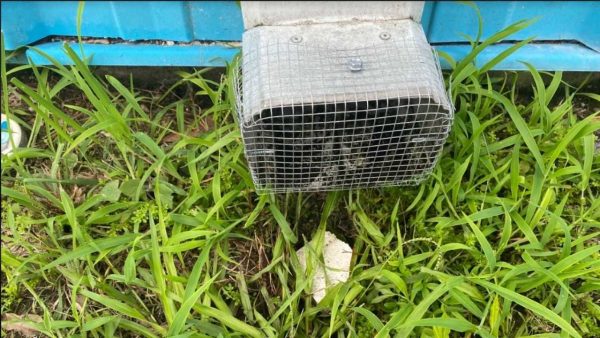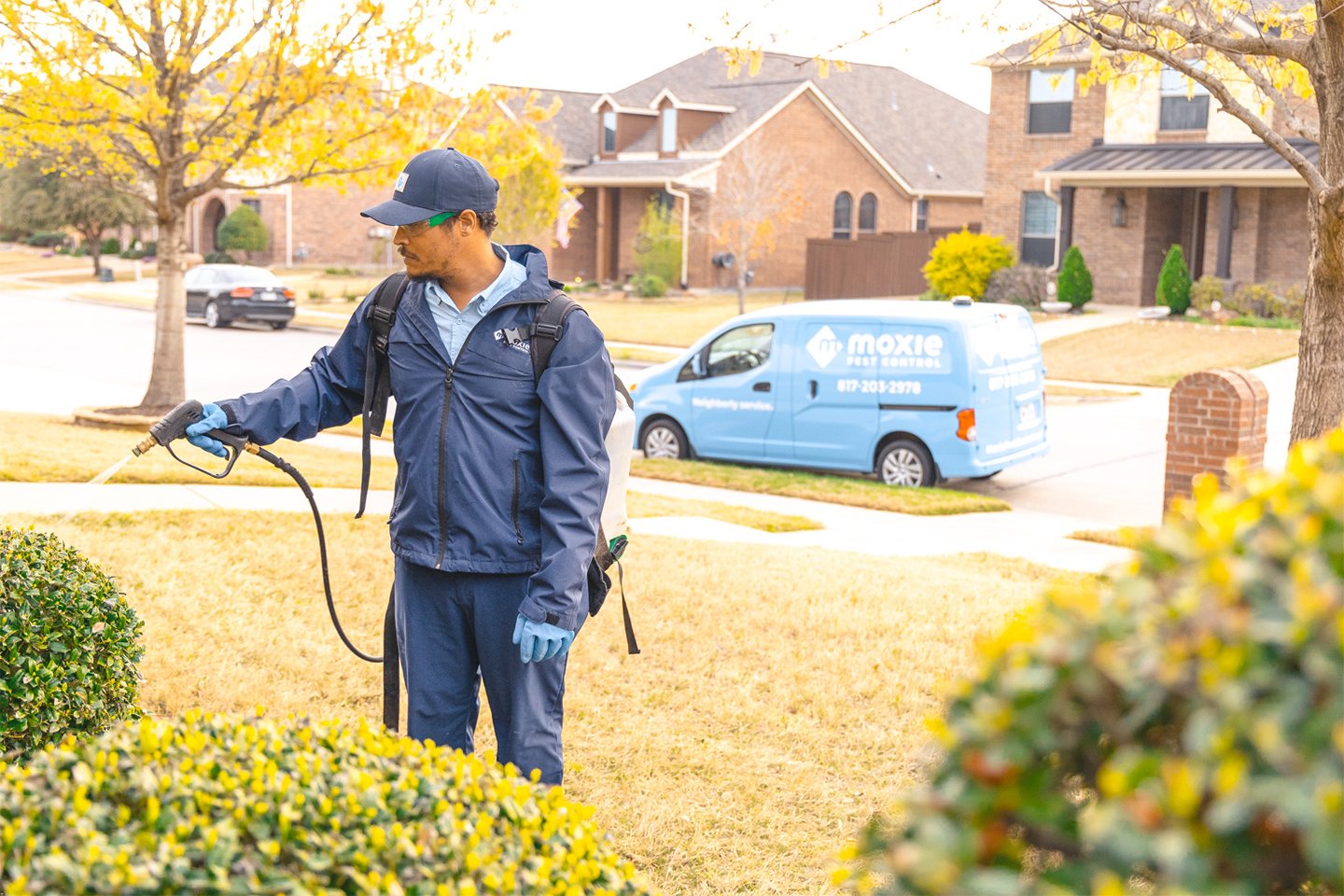Reliable Termite Treatment Port Charlotte to Defend Your Home
Learn More About the most recent Advancements in Insect Control and How to Execute Efficient Treatment Solutions
Recently, the field of bug control has witnessed substantial advancements, driven by the requirement for efficient and lasting therapy remedies. Innovative techniques such as Integrated Pest Management (IPM) combine green techniques with sophisticated modern technology, enhancing both efficacy and environmental duty. Moreover, the assimilation of smart innovations and do it yourself approaches has encouraged individuals to take on parasite problems much more effectively. As we check out these growths, it becomes vital to comprehend just how ideal to execute these techniques in numerous settings to attain optimal outcomes. The implications for pest monitoring practices could be transformative.
Eco-Friendly Pest Control Options
In recent times, the need for eco-friendly insect control options has actually surged as home owners and organizations alike look for lasting choices to conventional chemical treatments. This shift is driven by expanding environmental awareness and a desire to minimize the health risks connected with synthetic pesticides.

Environment-friendly parasite control approaches incorporate a series of methods that prioritize the usage of natural materials and methods. Integrated Pest Monitoring (IPM) is one such method, incorporating biological, social, and mechanical strategies to take care of bug populaces while lowering reliance on chemicals (Wildlife removal services). This alternative method emphasizes prevention via environment manipulation and the introduction of natural killers, thus fostering a well balanced environment
Another prominent alternative is using herb pesticides stemmed from plants, which often tend to be less hazardous to non-target microorganisms. Products like neem oil and diatomaceous planet have actually gained traction for their performance in managing insects while posing marginal risks to human health and wellness and the setting.
In addition, exemption methods, such as sealing entrance factors and keeping sanitation, play a vital function in environmentally friendly bug monitoring. By adopting these sustainable methods, businesses and individuals can efficiently handle insects while advertising a healthier planet for future generations.
Smart Technology in Insect Monitoring
Development is improving the landscape of pest management, with smart technology arising as a crucial force in improving effectiveness and efficiency - Wildlife removal services. The combination of Net of Things (IoT) gadgets, synthetic intelligence (AI), and data analytics is transforming exactly how insect control experts approach infestations
Smart traps furnished with sensing units can find bug task in real-time, sending immediate alerts to operators. This enables timely responses, minimizing damage and decreasing the need for extensive therapies. Furthermore, AI formulas examine historic data to predict pest actions, allowing proactive treatments based upon environmental problems and infestation patterns.
Drones and automated vehicles are additionally playing a considerable role in parasite administration, offering aerial analyses of large locations, determining hotspots, and also distributing targeted treatments. These modern technologies not only streamline procedures but additionally improve safety by limiting human direct exposure to potentially harmful chemicals.
Moreover, mobile applications empower customers to keep track of parasite activity and accessibility expert suggestions, promoting a joint method to pest monitoring. Generally, the fostering of clever innovation is setting a new requirement in pest control, highlighting data-driven decisions and lasting practices that eventually profit both house owners and specialists alike.
Integrated Insect Administration Strategies
Integrated Bug Monitoring (IPM) uses a holistic method to pest control, integrating numerous techniques to successfully take care of pest populations while lessening threats to human health and wellness and the atmosphere. IPM focuses on comprehending the pest life process, their all-natural adversaries, and the community in which they prosper.
Among the basic components of IPM is keeping an eye on pest populaces through regular inspections and information collection. This permits the recognition of bug limits, establishing when treatment is necessary. Cultural practices, such as crop hygiene, environment, and turning manipulation, are vital in minimizing bug prevalence and promoting plant health and wellness.
Mechanical controls, including barriers and traps, are also vital in IPM. These methods can literally eliminate or discourage pests without making use of chemicals. When required, the judicious application of chemical controls is used, concentrating on targeted treatments that lessen ecological effect.
Education and cooperation amongst stakeholders, including farmers, pest control professionals, and the area, are vital for the successful implementation of IPM approaches. By prioritizing lasting methods, IPM not only addresses pest concerns but also fosters a much healthier environment.
Biological Control Methods
Countless biological control approaches are progressively acknowledged for their effectiveness in handling pest populaces while advertising eco-friendly equilibrium. These strategies harness all-natural killers, parasites, and microorganisms to decrease pest numbers without counting on artificial chemicals. The introduction of ladybugs can properly manage aphid populaces, while nematodes target soil-dwelling insect larvae.
Additionally, using microbial chemicals, such as Bacillus thuringiensis (Bt), offers an environmentally friendly choice for handling caterpillar insects. These items especially target pest species, decreasing harm to valuable insects and pollinators. Additionally, preservation biological control emphasizes boosting environments for natural adversaries, such as birds and advantageous bugs, thus urging their existence in farming systems.
Research continues to reveal ingenious techniques within this field, such as making use of scents to interfere with pest breeding patterns or the growth of biocontrol representatives via genetic modification. Executing these techniques can cause sustainable bug monitoring techniques that minimize the reliance on chemical treatments, ultimately fostering healthier communities. As recognition of these techniques expands, they are becoming integral components of get rid of squirrels integrated pest management (IPM) strategies, using an equilibrium between reliable pest control and environmental stewardship.
Do It Yourself Parasite Control Solutions
As homeowners seek efficient ways to tackle parasite problems, do it yourself insect control solutions have gained appeal for their accessibility and cost-effectiveness. These methods empower individuals to resolve invasions making use of readily available materials and strategies, commonly without the requirement for professional intervention.

In addition, preserving proper hygiene and normal inspections can prevent parasite access and nesting (Wildlife removal services). Basic practices, such as securing cracks, removing food resources, and decluttering, can substantially decrease Resources pest populations. Traps, both homemade and commercially available, can additionally provide effective remedies for monitoring and regulating certain insects like pests or rodents

Conclusion
The integration of green insect control alternatives, wise technology, and cutting-edge management strategies presents a thorough technique to efficient pest monitoring. By embracing Integrated Parasite Administration (IPM) and using home termite control organic control techniques, alongside do it yourself remedies, lasting and responsible bug control can be accomplished. These advancements not just boost the effectiveness of parasite administration techniques however additionally add to a healthier setting. Executing these approaches promotes a well balanced ecosystem while properly dealing with pest populations.
Environment-friendly parasite control approaches include an array of techniques that focus on the usage of all-natural materials and practices. Integrated Bug Monitoring (IPM) is one such approach, combining biological, cultural, and mechanical tactics to manage insect populaces while lowering reliance on chemicals. As awareness of these techniques expands, they are becoming essential elements of incorporated pest administration (IPM) strategies, providing an equilibrium between efficient parasite control and ecological stewardship.
The combination of environment-friendly bug control choices, wise technology, and cutting-edge administration techniques offers a detailed method to reliable bug administration. By welcoming Integrated Insect Administration (IPM) and using biological control approaches, together with Do it yourself solutions, accountable and sustainable parasite control can be accomplished.